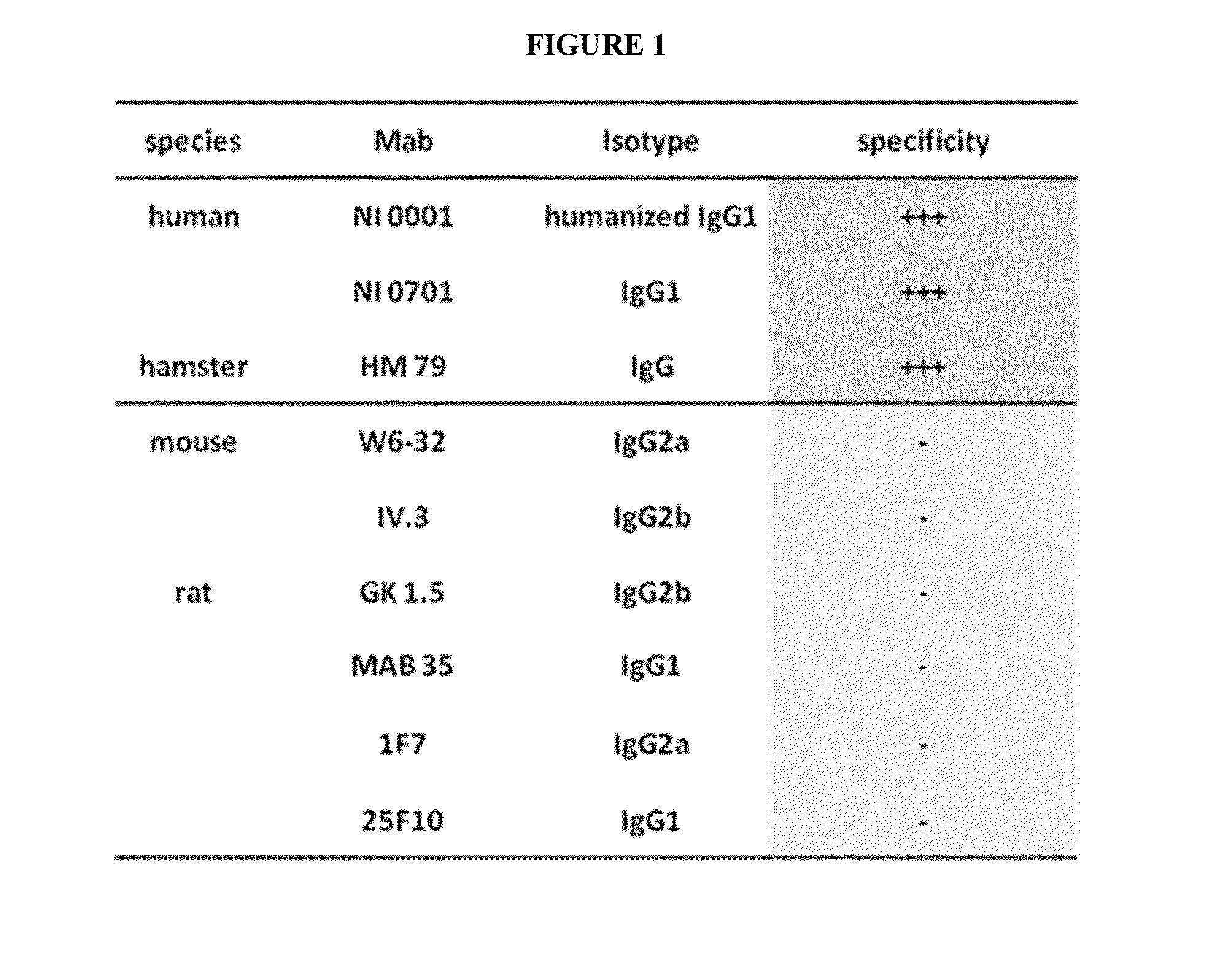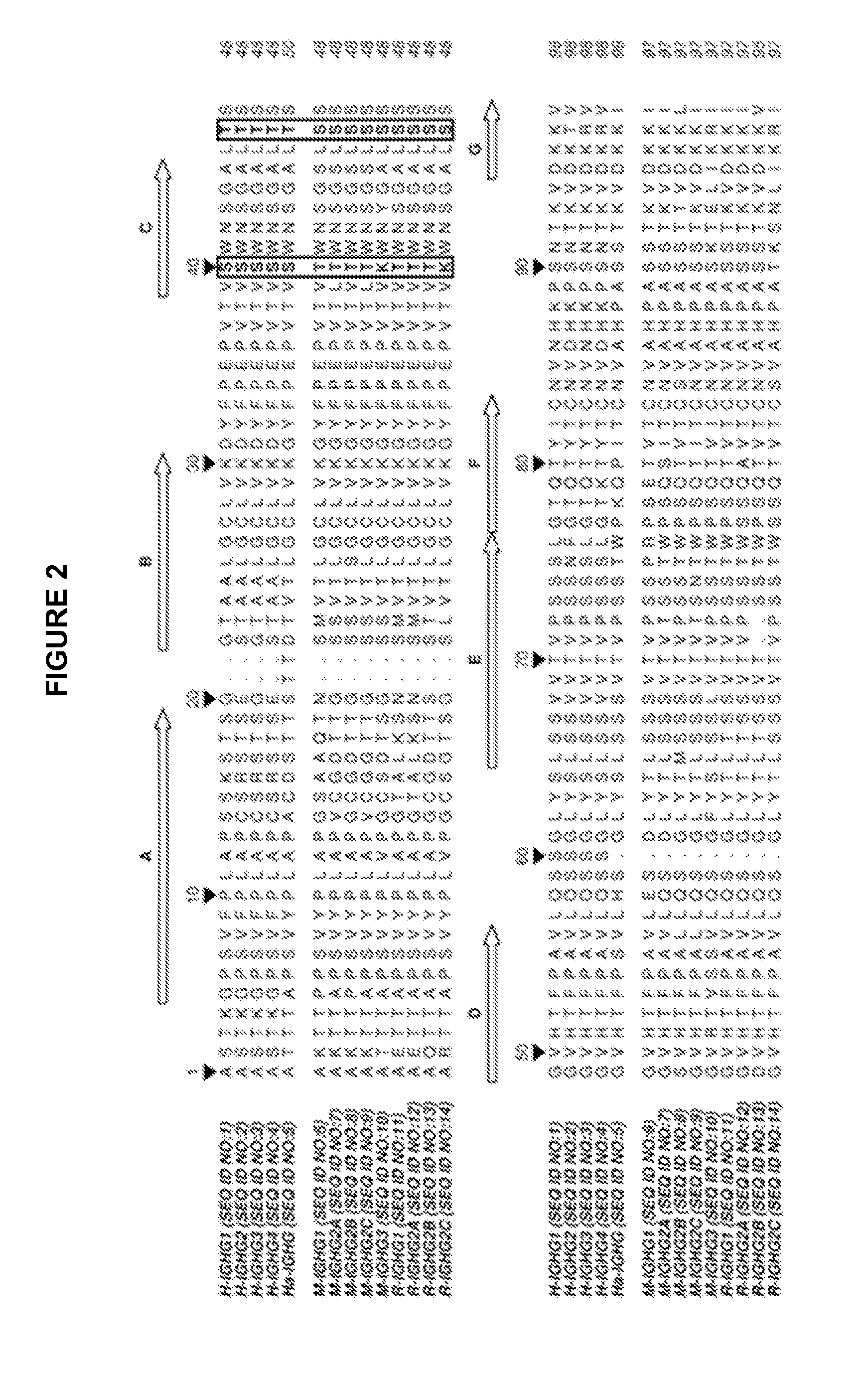Readily Isolated Bispecific Antibodies with Native Immunoglobulin Format
a technology of native immunoglobulin and antibody, which is applied in the field of ready-to-isolate bispecific antibodies with native immunoglobulin format, can solve the problems of limiting the therapeutic use of monoclonal antibodies, unable to achieve efficacy, and often suppressed immune responses of cancerous cells, so as to reduce or eliminate the binding of the second ch1 domain, improve the ability to quickly and effectively isolate the heteromeric protein, and improve the effect of rapid and effective isolation
- Summary
- Abstract
- Description
- Claims
- Application Information
AI Technical Summary
Benefits of technology
Problems solved by technology
Method used
Image
Examples
example 1
The CaptureSelect® IgG-CH1 Affinity Reagent Specifically Binds To Human And Hamster IgGs
[0071]Binding experiments were conducted with known purified antibodies of different species and different isotypes to test the specificity of the CaptureSelect® IgG-CH1 affinity reagent. These experiments revealed that only human and hamster IgGs could be retained on the CaptureSelect® IgG-CH1 affinity resin while mouse and rat IgGs of different isotypes couldn't bind to this affinity reagent (FIG. 1).
example 2
Identification Of Sequence Determinants Responsible Of The IgG Binding To The CaptureSelect® IgG-CH1 Affinity Reagent
[0072]Sequence alignment of human (IGHG1 SEQ ID NO: 1, IGHG2 SEQ ID NO: 2, IGHG3 SEQ ID NO: 3, IGHG4 SEQ ID NO:4), hamster (IGHG SEQ ID NO: 5), mouse (IGHG1 SEQ ID NO: 6, IGHG2A SEQ ID NO: 7, IGHG2B SEQ ID NO: 8, IGHG2C SEQ ID NO: 9, IGHG3 SEQ ID NO 10) and rat (IGHG1 SEQ ID NO: 11, IGHG2A SEQ ID NO: 12, IGHG2B SEQ ID NO: 13, IGHG2C SEQ ID NO: 14) isotypes was carried out (FIG. 2). Two residues conserved in human and hamster CH1 but not in mouse and rat sequences were identified: 40S and 47T. Their exposures to the solvent were also determined in antibody structure, indicating that these residues are highly accessible. Another residue 45A is located in the vicinity of 40S and 47T, is well exposed to the solvent and is partially conserved in the different species (FIG. 3).
example 3
Modification Of Human CH1 Domain To Alter Binding To CH1 Affinity Chromatography Media
[0073]Modification of human IGHG1 were introduced in the CH1 domain by site-directed mutagenesis as single (S40T or T47S) double (S40T, T47S) or triple (S40T, A45S, T47S) mutations and were called M2ST, M2TS, M2 and M3, respectively (FIGS. 4, 5 and 8). These different mutants were further expressed in 293 cells using standard mammalian cell transfection procedures and purified from the supernatant as described below.
[0074]Protein A and CaptureSelect® IgG-CH1 purification of differentially modified IgG1: Differentially modified monomeric IgG1 (ref e.g. WT, M2ST, M2TS, M2 and M3) were expressed in 293 cells. Cell supernatants were harvested and divided in two. Antibodies were then purified either on Protein A or CaptureSelect® IgG-CH1 affinity columns. The amount of purified antibodies obtained after purification were determined (FIG. 6). Percentage of antibody recovery between Protein A and CaptureS...
PUM
| Property | Measurement | Unit |
|---|---|---|
| pH | aaaaa | aaaaa |
| pH | aaaaa | aaaaa |
| pH | aaaaa | aaaaa |
Abstract
Description
Claims
Application Information
 Login to View More
Login to View More - R&D
- Intellectual Property
- Life Sciences
- Materials
- Tech Scout
- Unparalleled Data Quality
- Higher Quality Content
- 60% Fewer Hallucinations
Browse by: Latest US Patents, China's latest patents, Technical Efficacy Thesaurus, Application Domain, Technology Topic, Popular Technical Reports.
© 2025 PatSnap. All rights reserved.Legal|Privacy policy|Modern Slavery Act Transparency Statement|Sitemap|About US| Contact US: help@patsnap.com



